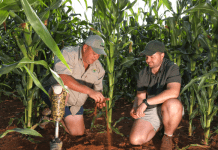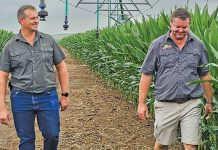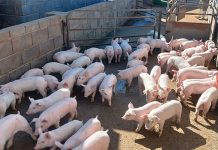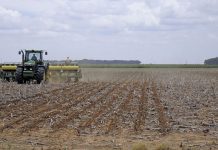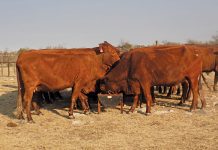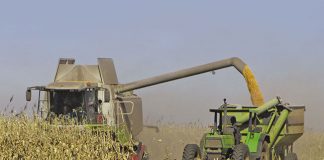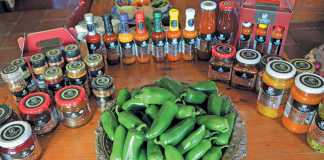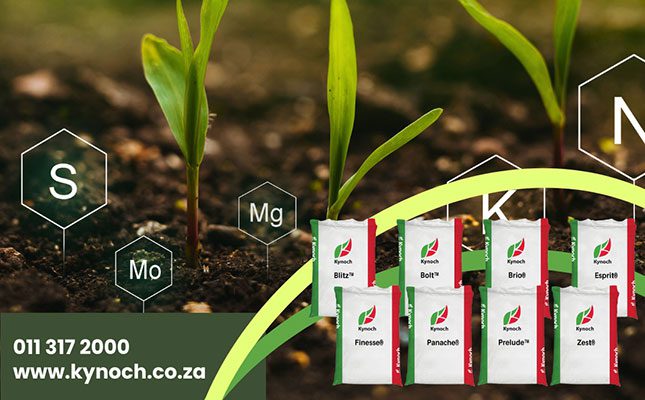
Soil is a dynamic and multifunctional living system that exists as a relatively thin layer on the Earth’s crust. Soil is not an inert growing medium – it is a living and life-giving natural resource. It is teaming with billions of bacteria, fungi, and other microbes that are the foundation of an elegant symbiotic ecosystem.
Soil health is defined as the continued capacity of soil to function as a vital living ecosystem that sustains plants, animals and humans. Healthy soil gives humankind clean air and water, bountiful crops and forests, productive grazing lands, diverse wildlife, and beautiful landscapes.
As the world population and food production demands rise, keeping the soil healthy and productive is of paramount importance. More and more farmers are increasing their soil’s organic matter and improving microbial activity by employing soil health principles and systems that include no-till, cover cropping, and diverse rotations.
In the past half century, expansion in global crop output, and thus food security, was achieved largely by using mineral fertilisers, along with improved crop varieties, mechanisation, pest and disease control, and irrigation.
Globally, cereal yields have paralleled fertiliser use. Today, about half of the world’s crop output is attributed to fertilisers. All crops remove nutrients from the soil. Where removal exceeds inputs, nutrient depletion or nutrient ‘mining’ occurs, a condition that is not sustainable.
Fertilisation practices need to be balanced. The amounts of major nutrients added in fertilisers must be based on what is already in the soil and what is removed by the crops.
Applying fertilisers following the 4R nutrient stewardship principles (Right nutrient source at the Right rate, at the Right time and in Right place) enhances nutrient use efficiency, which reduces nutrient losses to the environment, including in the form of greenhouse gases.
Effective and efficient fertilisation is a vital part of the climate-smart agricultural practices that could reduce global emissions by 5,5 billion tons to six billion tons of CO2 equivalent per year, around the same as removing 1 500 coal-fired power plants from the energy sector.
The Miracle Range of fertilisers from Kynoch help with the implementation of the 4R principles in that they contain macronutrients, secondary nutrients and product-specific micronutrient combinations that are formulated for enhanced crop growth. Further, the Miracle Range Contain KynoPlus as the main nitrogen source.
KynoPlus reduces potential volatilisation losses to negligible levels. All the Miracle Range products contain added calcium, magnesium, sulphur, silicon and zinc.
Benefits of using the Miracle Range include:
- Application of additional secondary and certain micro-elements ensures that these important plant nutrients are supplied to the crop;
- KynoPlus improves nitrogen efficiency, which can lead to higher yield and greater profit;
- The phosphorus source has an alkaline pH that protects the phosphorus from becoming locked up by available iron or aluminium;
- The presence of calcium and magnesium contributes to the neutralisation of soil acidity in the vicinity of the phosphate grain; and
- Silicon influences crop physiology through gene expression. This helps the crop to manage stress, which can lead to improved water use efficiency and increased resistance to pests and diseases.
- Finesse, Blitz, Esprit, Panache and Brio are typically applied as planting blends.
- Products generally used as surface applications or top dressings include Brio, Panache, Bolt and Prelude.
References: Bijay Singh and John Ryan 2015. Managing Fertilisers to Enhance Soil Health. First edition, IFA, Paris, France, May 2015. Copyright 2015 IFA. Smith, P., D. Martino, Z. Cai, D. Gwary, H. Janzen, P. Kumar, B. McCarl, S. Ogle, F. O’Mara, C. Rice, B. Scholes, O. Sirotenko, 2007: Agriculture. In Climate Change 2007: Mitigation. Contribution of Working Group III to the Fourth Assessment Report of the Intergovernmental Panel on Climate Change [B. Metz, O.R. Davidson, P.R. Bosch, R. Dave, L.A. Meyer (eds)], Cambridge University Press, Cambridge, United Kingdom and New York, NY, USA.
United States Department of Agriculture: Natural Resources Conservation Service: Soil Health.

